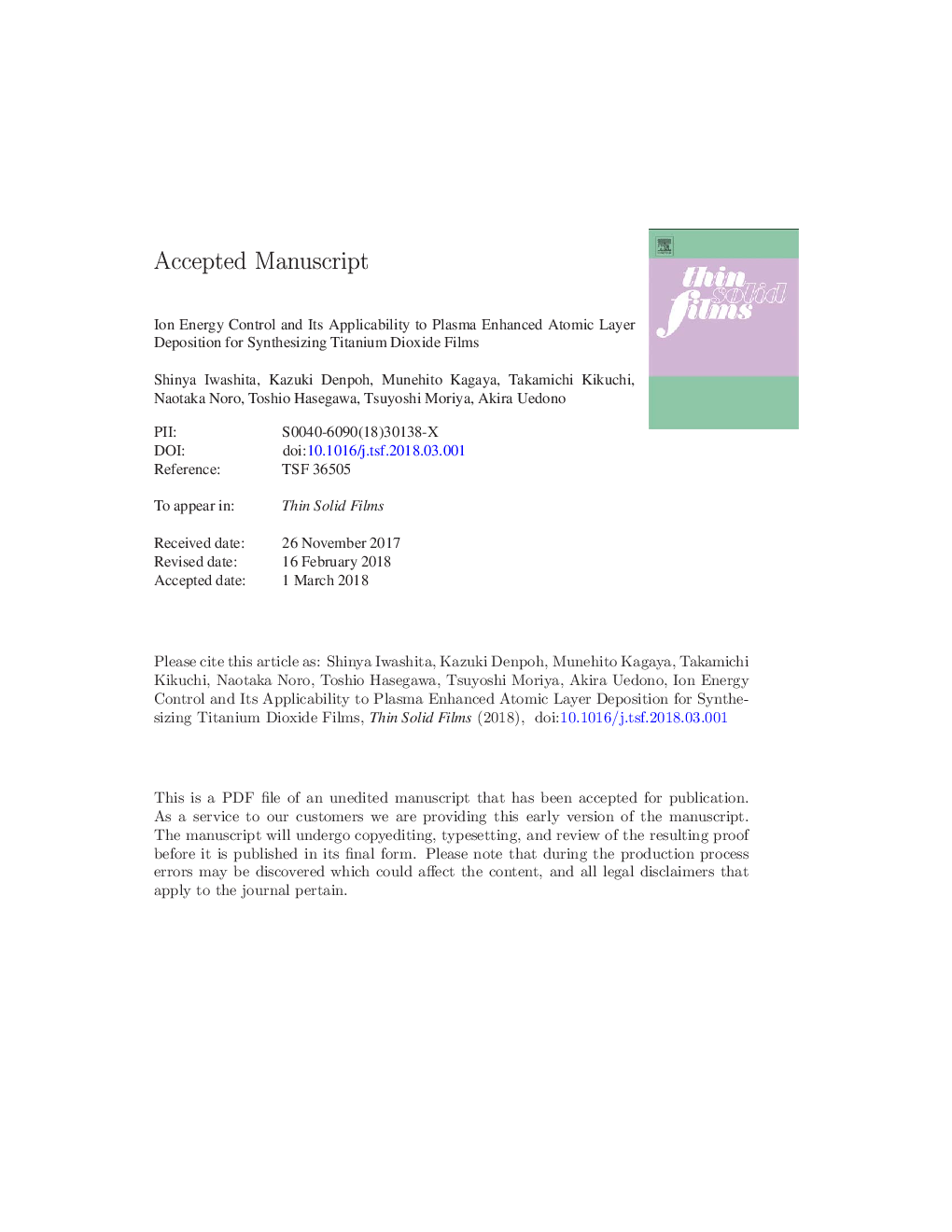| Article ID | Journal | Published Year | Pages | File Type |
|---|---|---|---|---|
| 8032542 | Thin Solid Films | 2018 | 22 Pages |
Abstract
Ion energies in capacitively coupled radio frequency (RF) discharges were controlled by tuning the impedance at the upper and lower electrodes as well as their RF power ratio, and the technique was applied to plasma enhanced atomic layer deposition (PEALD) process for synthesizing titanium dioxide films. The film characteristics show a clear correlation with the mean ion energy, â¨Îµiâ©, which is explained by the formation of fine pores in the films due to the bombardments of high energetic ions during PEALD process in case of a high â¨Îµiâ© condition. The method to control â¨Îµiâ© by changing the RF power ratio in addition to tuning the impedance of the electrodes realizes a wider range of change in â¨Îµiâ© and thus the film characteristics, compared with the method without changing the RF power ratio. Although the films deposited on amorphous carbon patterns show a good step-coverage even for a low â¨Îµiâ©, the etching (deformation) of the patterns becomes pronounced with increasing â¨Îµiâ©. In this paper, a simple numerical approach using the ion incident depth to express the ion etching is introduced. Based on this approach, the contribution of ions and radicals to the etching of the patterns is discussed.
Keywords
Related Topics
Physical Sciences and Engineering
Materials Science
Nanotechnology
Authors
Shinya Iwashita, Kazuki Denpoh, Munehito Kagaya, Takamichi Kikuchi, Naotaka Noro, Toshio Hasegawa, Tsuyoshi Moriya, Akira Uedono,
